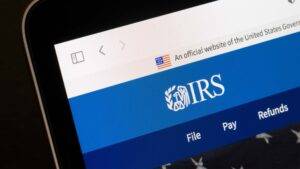
Article Note:
- Many companies did not utilize the ERC because it couldn’t be used in concert with a Paycheck Protection Program (PPP) loan.
- The Consolidated Appropriations Act, 2021 (CAA) retroactively removed the mutual exclusivity between the two incentives.
- The CAA made the ERC now available for 2020 periods, and the American Rescue Plan (ARP) extended the ERC through 2021.
- Companies who cast aside the ERC for the PPP in 2020 should review past and current quarters for potential eligibility because the benefit can be a lifesaver.
The Employee Retention Credit (ERC) is an incredibly valuable coronavirus relief measure that every business should review. Initially introduced as part of the Coronavirus Aid, Relief, and Economic Security (CARES) Act, the ERC is a refundable payroll tax credit designed to help employers adversely affected by the pandemic who maintain employee payroll during qualifying periods in 2020 and 2021.
Many employers previously did not utilize the ERC because it was unable to be taken in conjunction with a Paycheck Protection Program (PPP) loan. But the Consolidated Appropriations Act, 2021 (CAA) retroactively removed the mutual exclusivity between the two incentives, making the ERC now available for 2020 periods. In addition, the CAA and the American Rescue Plan (ARP) extended the ERC through 2021 and brought other favorable changes as well.
Qualifying for the ERC
A business qualifies for the ERC by passing at least one of two tests in a 2020 or 2021 calendar quarter:
- The business was affected by a full or partial shutdown of operations due to a COVID-19-related government order; or
- The business experienced a large drop in year-over-year gross receipts.
There is also an additional test for small startups only available for the third and fourth quarters of 2021.
Governmental Shutdown Test
To qualify for a shutdown, business operations must have been fully or partially suspended during the quarter due to orders from an appropriate governmental authority limiting commerce, travel, or group meetings due to COVID-19. Once this occurs, the quarter is an eligible quarter, but a credit is only available on wages paid during the part of the quarter the business was shut down.
A full shutdown is easier to spot than a partial, however, the IRS has provided guidance in Notice 2021-20 to help businesses determine if they have a qualifying partial shutdown. A partial shutdown may be where a business is allowed to remain open, but it’s not be able to continue all of its typical operations due to imposed restrictions. The key to a partial shutdown is the governmental order needs to have caused either a more than nominal portion of business operations to be suspended or for a mandated restriction or requirement to have a more than nominal effect on the business.
Notice 2021-20 provides that an impact will be more than a nominal portion of business operations if it is greater than 10% of either 2019 gross receipts or total employee hours.
Example: Tasty Restaurant was subject to a qualifying governmental order, forcing its indoor dining to close temporarily. However, Tasty may continue providing carry-out or drive-through sales. In 2019, indoor dining comprised 78% of Tasty’s gross receipts, thus it has sustained a qualifying partial shutdown for the purposes of the ERC for the period it must refrain from offering indoor dining.
Defining when a required modification has more than a nominal effect on a business is much grayer, relying heavily on facts and circumstances. Unlike the previous definition for more than a nominal portion of business operations, no quantitative formula was provided by the guidance for the nominal effect of a modification. Notice 2021-20 references a more than 10% of test, but no numerator or denominator is provided. The Notice states, “A governmental order that results in a reduction in an employer’s ability to provide goods or services in the normal course of the employee’s business of not less than 10% will be deemed to have more than a nominal effect on the employer’s business operations.”
Decline in Gross Receipts Test
Qualifying for the decline in receipts test differs depending upon the year. For any quarter in 2020, the employer’s gross receipts must be less than 50% of what they were for the same quarter in 2019. Once this happens, every subsequent quarter is an “eligible quarter” until the end of the quarter, in which the business’s receipts have returned to at least 80% of what they were for the same quarter in 2019. For 2021, this test is met for any quarter in which gross receipts were less than 80% (rather than 50) of the same quarter in 2019. Businesses in 2021 also may elect to look back to the previous quarter and compare that quarter with the same quarter in 2019.
Recovery Startup Business
Outside of a government shutdown or decline in receipts, the ARP added one more way for a business to qualify for an ERC. A “recovery startup business” can claim the credit for the third and fourth quarters of 2021 if it started after February 15, 2020, and had average gross receipts of $1 million or less. The ERC for a recovery startup business is limited to a maximum of $50,000 per quarter.
ERC Benefits
Once an eligible period has been established, wages must be identified within those periods to claim a credit, which differs depending upon the year in which the wages are paid. Additionally, if a business exceeds a certain level of 2019 full-time employees, wages will be limited to only those paid to employees to not provide services. The threshold is 100 full-time employees for a 2020 credit and 500 for 2021 quarters. However, severely distressed employers – those who experienced a greater than 90% reduction in gross receipts compared to the same quarter in 2019 – are not subject to the 500 full-time employee test for the third and fourth quarters of 2021.
A credit for 2020 periods equals 50% of up to $10,000 of qualified wages paid in all 2020 quarters, per employee, after March 12, 2020, through December 31, 2020. A credit for 2021 periods equals 70% of up to $10,000 of qualified wages paid, per employee, in each qualifying quarter from January 1 2021, through December 31, 2021. Therefore, a credit in 2020 equals a maximum of $5,000 per employee, and a credit in 2021 equals a maximum of $28,000 per employee!
PPP Interplay
For the 5.2 million small businesses who took the PPP in 2020, the ERC is now available. The catch, however, is that the same wages cannot count for both the ERC and the PPP. But with a solid understanding of the rules, the benefits of both programs can be realized.
Given that the PPP will generally provide greater cash flow, ensuring maximum PPP forgiveness is attained is advisable. To do so, borrowers must allocate at least 60% of total PPP loan forgiveness to payroll costs, but no more than that amount if the remainder is achieved via nonpayroll costs. Therefore, maximizing PPP nonpayroll costs is a good place to start and will make room for excess wages paid during the PPP covered period to be utilized for the ERC.
A case-by-case analysis of payroll expenses in the overlapping ERC and PPP periods will enable a careful selection to apply towards either program – a spreadsheet here may become your best friend! Start by identifying payroll costs that are not eligible wages for the ERC and those which are not qualifying payroll costs for the PPP, filling each bucket accordingly. Quantify the minimum amount of payroll costs required to reach complete PPP loan forgiveness and allocate dually-qualifying wages first towards achieving total PPP forgiveness, with excess wages allocated to the ERC.
If there are overlapping PPP/ERC periods that straddle 2020 and 2021, it could be beneficial to select payroll for PPP in 2020 periods to save wages in 2021 for the ERC, given it is a much more lucrative credit in 2021.
Also, be aware of the ERC’s interaction with other relief programs. Wages are not able to be utilized for both the ERC and the Shuttered Venue Operator (SVO) grant, Restaurant Revitalization Fund (RRF) grant, the paid sick and family leave credits under the Families First Coronavirus Relief Act (FFCRA), and a handful of other credits.
Conclusion
ERC eligibility is determined on a case-by-case basis. Each situation contains varying elements that may or may not qualify a business for the credit, particularly with regard to a government shutdown and interplay with other programs. However, the ERC is generally worth the effort! Companies who originally cast aside the ERC for the PPP in 2020 should review past and current quarters for potential eligibility because the benefit can be a lifesaver.
Recent Stories
Next Up...
- |
- TaxByte
- |
- TaxByte
- |
- TaxByte





